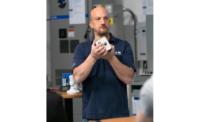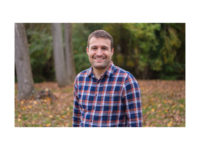Every successful project starts with a framework. A vision statement. A blueprint.
The editors of Engineered Systems are proud to present The Blueprint — a Q&A interview with HVACR engineering’s leading voices. These one-on-one discussions will examine the trade’s history, current industry trends, and the factors shaping the sector’s future.
In 1919, Walter Vallett Sr., founder of Lochinvar, entered the water heater business and began his career with Everhot Water Heating Company. More than 100 years later, the company continues to provide a boiler for every need. From a few thousand up to six million Btu, Lochinvar has the precise high-efficiency boiler to fit every project.
Recently, Tommy Olsen, market segment coordinator for cogeneration and pool heating products at Lochinvar, sat down with Engineered Systems editor-in-chief, Herb Woerpel, to discuss the CHP market, the company’s partnership with EC Power, and more.
Engineered Systems: Introduce yourself to our readers and share a little bit about your role at Lochinvar.
Olsen: My name is Tommy Olsen, and I’m the market segment coordinator for cogeneration and pool heating products. I’ve been with Lochinvar for two-and-a-half and have been in the water heating industry for 30 years
Engineered Systems: While many recognize Lochinvar for its boiler and/or water heating systems, the company is making a big splash in the combined heat and power sector. For those whose heads reside in the sand, can you share exactly what a CHP system is and how it works?
Olsen: CHP, or cogeneration, is the ability to produce both heat and power from a single fuel source. In our case, we use a four-cylinder, reciprocating, natural gas engine to turn an induction generator that produces 24 kW of electricity. At the same time, we are recovering the heat from the engine, generator, and exhaust to produce 163 KBtu of heat, all with an input of 262 KBtu of natural gas. With 31% electrical efficiency and 62% thermal efficiency, we have an overall efficiency of 93%. In addition to lowering operating costs by producing on-site electricity using low cost natural gas, our cogen system helps reduce a facilities environmental impact by reducing carbon footprint.
Engineered Systems: In April 2018, Lochinvar formed a strategic partnership with EC Power. Can you share a little background on what led to this partnership?
Olsen: Lochinvar had been researching cogeneration technology for more than five years. The opportunity to partner with Europe’s premier micro CHP (<50kW) manufacturer was a natural fit for our market segment. Lochinvar chose to enter the emerging market for cogeneration in the United States, as the technology is already widely used in Europe. Our high-efficiency boilers and water heaters along with a wide array of package systems allows Lochinvar to provide a solution for any job.
Engineered Systems: You’re more than a year and a half into that partnership. How have things progressed?
Olsen: Early on, we had to determine the North American requirements for micro-CHP products. This included obtaining CSA, UL, and EPA approvals. Other activities included incorporating NPT fittings and software changes for Fahrenheit and Btu display. Today, we have several installations in the U.S. and Canada.
Engineered Systems: Earlier this year, Lochinvar released the XRGI25, which is billed as “one of the most cutting-edge cogeneration products to ever be released in North America.” What makes this unit so special?
Olsen: Lochinvar is focused on heating water in the most efficient way possible. The XRGI25 uses an induction generator. This means we are providing supplemental power while simultaneously supporting the base heat load for a facility. Induction power generation requires the grid to be active. In the event of a power failure, the XRGI25 shuts down. This means there is no danger to electric lineman of power coming back into the grid. Being an AC-to-AC system means we are not required to have the inverters and expensive disconnect systems that backup systems are required to have. Also, our small footprint allows for indoor installation access through a standard door opening. Additionally, the XRGI25 has an environmental benefit by reducing emissions equivalent to taking 14 cars off the road or 10 homes off the grid when compared to the emissions and efficiency of power plant-provided electricity.
Engineered Systems: Which applications would be the best fit for the XRG125? Do you have any anecdotal examples you can share?
Olsen: Any facility that has a steady demand for hot water should consider cogeneration in its plans — either for new work or replacement. Hotels, schools, fitness centers, multifamily, agriculture, commercial laundry, and pool heating are just some of the high-profile examples. We also need to consider applications where reducing environmental impact is important as well.
Engineered Systems: The XRG125 is billed as a “Micro CHP.” What’s the difference between Micro CHP and traditional CHP?
Olsen: Micro CHP simply refers to cogeneration systems that produce less than 50kW of electricity.
Engineered Systems: As far as consulting and specifying engineers are concerned, when should they be considering CHP?
Olsen: The XRGI25 is basically just another heat source. Specifying engineers should consider micro-cogeneration when doing a feasibility analysis of a project. The added benefit of low emissions and site-generated electricity may help an owner meet environmental objectives and lower the facility operating cost. Additionally, micro-cogeneration can help reduce electric demand fees that, in some cases, can be 50% of the electric bill.
Engineered Systems: If you could relay one message to consulting and/or specifying engineers, what would it be?
Olsen: My message is simply to be aware of technological advances and be prepared to be a leader in introducing new solutions to their clients.




